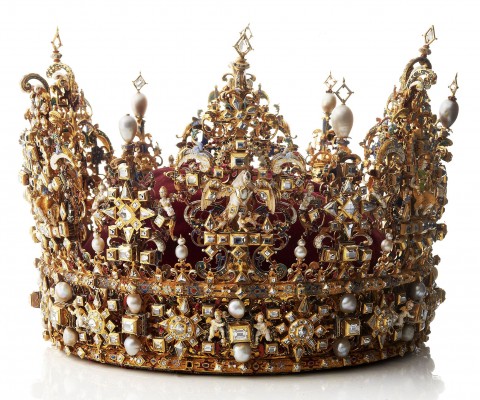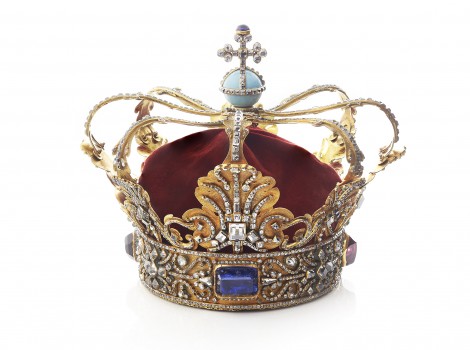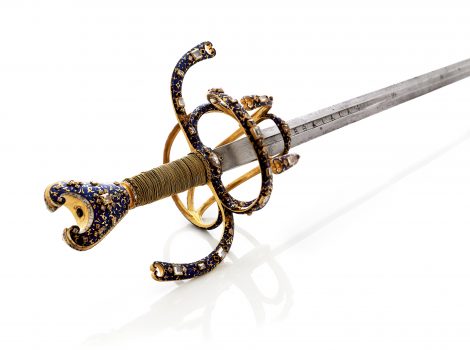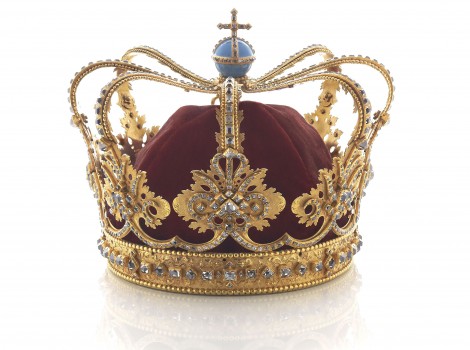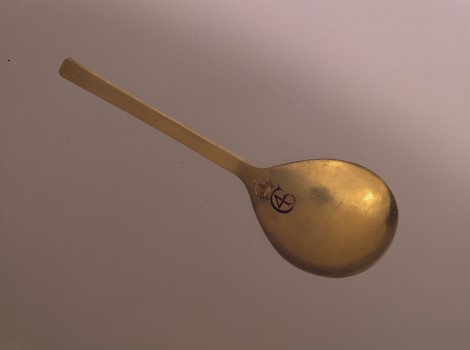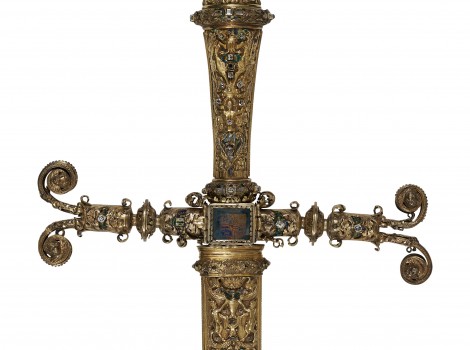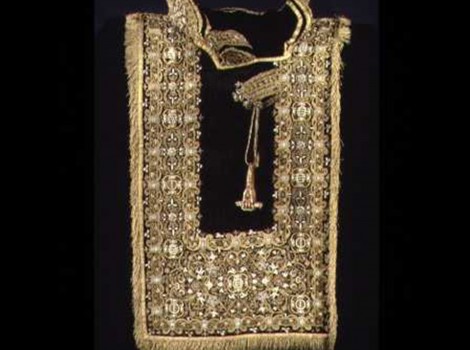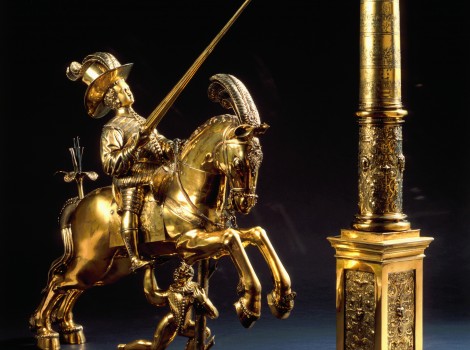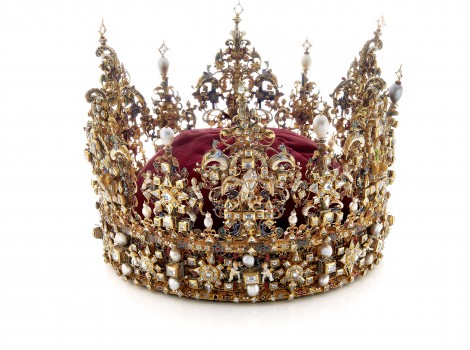Christian IV’s crown
Christian IV’s crown, made 1595-1596 by Dirich Fyring in Odense.
Gold with enamel, table-cut stones and pearls; total weight 2895 g. The figures on the crown’s large points illustrate the virtues and powers of a king. In the front of the crown you see a pelican pecking itself in order to feed its offspring with the blood, symbolizing the need for every king to sacrifice his own blood in order to protect his subjects, as weel as being a traditional representation of the devotion of Christs’ sacrificial death. On top of the right arm of the king one can find Fortitudo riding a lion and over his left one sees Justitia, representing the kings’ martial skills and his position as the supreme judge. At the back of the crown one finds a breastfeeding mother showing the king as being superior to the church, showing his love to God and his devotion to his subjects.
Inside are the coats-of-arms of the royal provinces. The crown was constructed deliberately open (compare to Christian V’s crown in treasury 3), in spite of this being out of fashion. This is said to have been related to the crowns of the nordic Kalmarunion, a union consisting of Sweden and Norway but headed by Denmark. This deliberate choice then, was presumably ment to show his more or less legitimate claim to a unified Scandinavia. The crown was used for the last time at Frederik III’s coronation in 1648, where he decided to have it modernized, though having financial problems. He even had to redeem the crown from a banker in Hamburg, because Christian IV had it pawned.

 Dansk
Dansk
 English
English
 Deutsch
Deutsch

